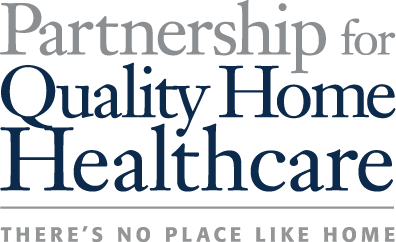May 9, 2013
Home Health Industry Says Medicare Rule Should Consider Future Impact of Any Cuts
Posted in: News
CQ Healthbeat
Home health agency executives officials who are nervous about an upcoming Medicare payment rule are warning that companies in some states could lose money by 2017 if federal officials adopt aggressive cuts.
The Centers for Medicare and Medicaid Services is expected to release a proposed payment rule within the next month or so. The health care law says that payments for the agencies “shall be adjusted by a percentage determined appropriate” by the Health and Human Services secretary. The payment changes must be phased in over four years, with full implementation in 2017.
The law caps the cuts at 3.5 percent cut per year.
Advocates for the home health care industry that are part of a coalition known as the Partnership for Quality Home Healthcare say that because the law does not explicitly say that the payments have to be reduced, HHS officials have wide discretion over how much to cut — if at all — the Medicare reimbursement rates.
The Medicare Payment Advisory Commission has called for restructuring home health payments in ways that would reduce payments. In its March report, the commission said rebasing would “better align Medicare’s payments with the actual costs of home health agencies.”
The commission estimates that home health companies will make about 11.8 percent on their medicare business in 2013 and added that they have averaged 17.7 percent in 2001 through 2010.
“For over a decade, payments have consistently and substantially exceeded costs” for home health agencies, said MedPAC.
But the coalition says that looking only at the past is a mistake.
The group, comprised of home health care companies such as AccentCare, Amedisys, Bayada Home Health Care, Encompass Home Health, and Guardian Healthcare, has hired former House Energy and Commerce Committee Chairman, Republican Billy Tauzin of Louisiana, to represent them. The coalition released a report Thursday showing the impact on the industry under three different scenarios of cuts.
If CMS officials do not cut home health agency payments further, the national average margin in 2017 would be 4.7 percent, according to the industry’s analysis. Cutting payments so that the national average margin is zero would mean that companies in six states would face double-digit losses. If CMS adopts the maximum amount of cuts allowed under the law, home health agencies in every state would face losses and the national average would be a negative margin of 11.4 percent in 2017, said the report.
One way that the industry report’s projections differ from MedPAC estimates is that the coalition included hospital-based home health agencies, while MedPAC numbers focus on freestanding agencies.
Eric Berger, the CEO of the partnership, said at a briefing with reporters that the study represents the industry’s “best guess” at the impact. He acknowledged that CMS officials have better data and said one reason for doing the report is to spur federal officials to do their own analysis.
“Our numbers aren’t necessarily right,” said Berger, saying that the group is essentially asking federal officials to run the numbers themselves. “We just want them to go through this exercise.”
Berger said the group contracted with consulting firms Avalere Health and Dobson DaVanzo & Associates in order to try to get the most accurate projections possible.
Tauzin, who is now at the Alston & Bird law firm, said at the press briefing that it’s important to remember that most of home health agencies’ revenues come from Medicare and that for home health Medicare payments are often higher than under private insurance. In other sectors, medical providers can make up for low Medicare payments by charging privately-insured patients more, but Tauzin said that isn’t the case in home health.
Tauzin said that the industry was expecting to face $39 billion in Medicare cuts over a decade through the implementation of the health law, but that reductions have actually ended up totalling about $50 billion because anti-fraud provisions that were not expected to reduce payments overall have cost the industry $11 billion.
Another stress on home health providers is expected to come when the Department of Labor issues final regulations to extend overtime and minimum wage pay to home health care workers who provide care for Medicaid patients. The department has issued a proposed rule that has generated opposition from staffing agencies, Medicaid directors and some congressional Republicans.
Some health agencies have given the industry a bad reputation by being inefficient or seeking to overbill the federal government. Tauzin said that agencies that play by the rules want to “clean up a part of this sector that needs cleaning up because it’s a stain on the rest.”
The coalition supports about $15 billion in additional cuts over a decade — but wants the cuts made in ways that penalize agencies that are bad actors.
“We’re not saying there aren’t savings in this industry,” said Tauzin. But the companies want to target the reductions in order to avoid the risk that “you end up making the good agencies pay for the bad.”
In 2011, about 3.4 million Medicare beneficiaries received home care from about 12,199 agencies, according to MedPAC. The Medicare program spent about $18.4 billion on home health services in 2011.
